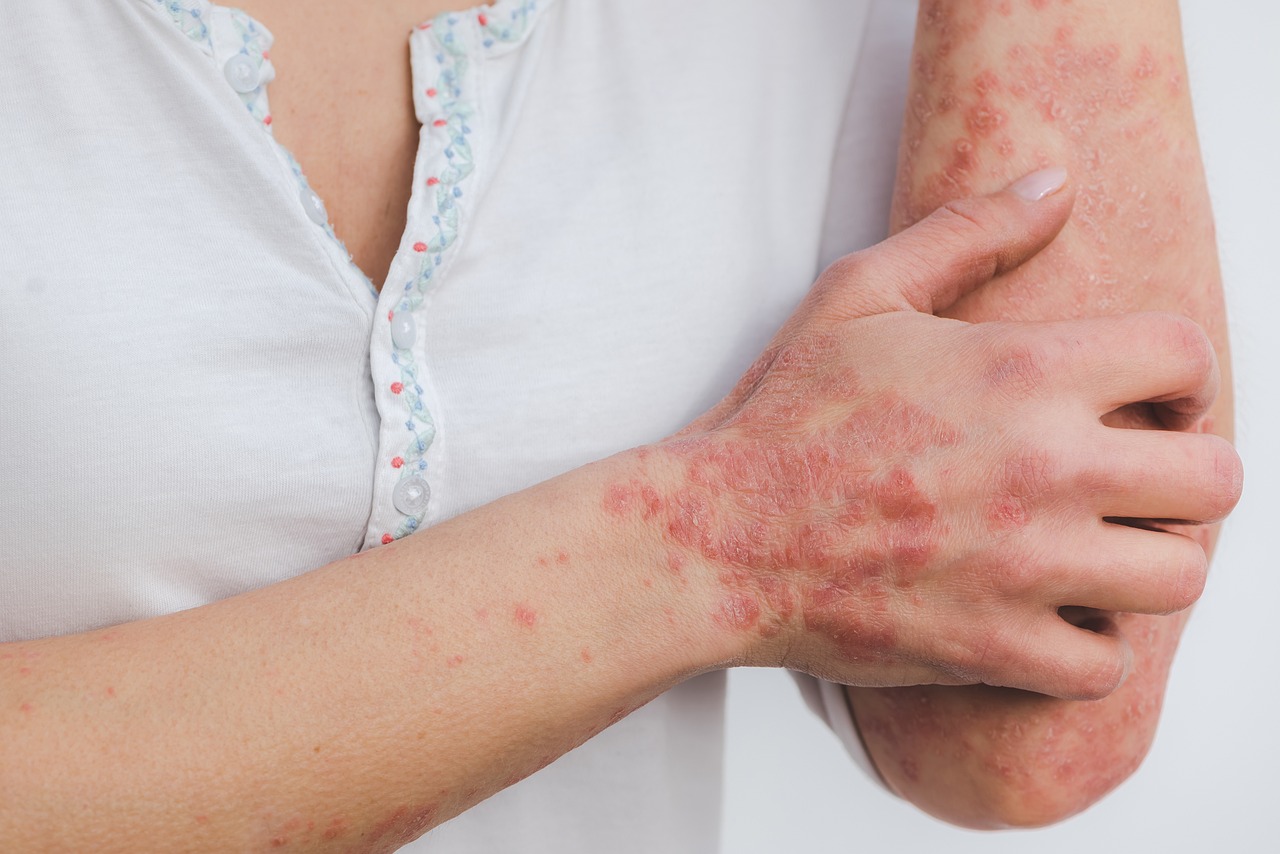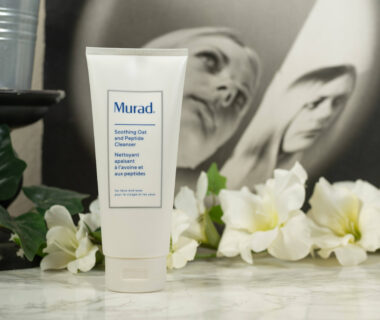ADVERTISEMENT INFO: SOME PRODUCTS MENTIONED IN THIS POST ARE PR (GIFTED) AND LINKS USED ARE AFFILIATE LINKS. I RECEIVED NO MONEY TO WRITE THE BLOGPOST. PLEASE READ DISCLAIMER
We have talked in length about hyperpigmentation already, mainly about the one that affects the face. But what about other areas of the body? What about hyperpigmentation on the knees, back and stomach? How about dark patches on your thighs and underarms?

Are they different in prevention and treatment? This is what I want to talk about today!
Do you suffer from hyperpigmentation on your body? What has helped?
What is the difference between hyperpigmentation on the face and on the body?
The human body is incredibly complex and at the same time very basic in that it usually works in principles, so what causes hyperpigmentation on your face is usually the same that causes hyperpigmentation on the body: A specific trigger, usually UV exposure, hormones or trauma, activates melanocytes that start producing more melanin which darkens the skin. (More info: What is hyperpigmentation and where does it come from?)
If it is a repetitive or ongoing trigger, it might also cause melanocytes to migrate to a certain area and stay there, meaning that patch of skin will forever react more intensely than the surrounding skin to a new stimulus.
In that, hyperpigmentation on the body and on the face are the same. There are a few triggers that mainly occur on the body though, and a few diseases that lead to darkening of the body skin, so there sometimes is a difference – I will get to that in a bit.

What are the most common areas for hyperpigmentation on the body?
The areas of the body where you see hyperpigmentation most often are those areas regularly exposed to the sun: hands, decollete, shoulders and, especially in people with short hair, the neck.
Hormone related pigmentation is commonly found on the stomach – melasma for example, often referred to as mask of pregnancy because it appears around the mouth like a mask, frequently also manifests on the stomach. Many people who are pregnant also notice a dark line called Linea Nigra extending from their belly button down to their pubic region during later stages of the pregnancy – it is more common in people with more melanated skin and can in some cases extend upwards on the abdomen as well. (More info: Skincare during pregnancy)
Also very common is darkening underneath the knees and sometimes on the elbows, in the armpits, in the groin area and on the inside of your thighs.
Now neither knees nor armpits are regularly exposed to UV radiation, here the pigmentation has other causes.

Image by Daniel Reche from Pixabay
What can cause hyperpigmentation on the body?
Aside from UV radiation, hormones and inflammation – you can get leftover hyperpigmentation after hair removal with ingrown hairs in groin and armpits – the main culprit for the darkening of the skin is friction or pressure. (More info: How to prevent ingrown hairs)
Imagine you spend a lot of your time on your knees – because you have a small child, because you love gardening, because you pray that way, there are many reasons – the skin beneath your knees is under much more pressure than it usually would be. That increased pressure leads to thickening of the skin, and that thicker skin looks darker.
In the groin, in the armpits and on the inside of your thighs chafing can irritate and inflame the skin, again leading to melanin deposition there. Same would be true for chronically inflamed areas of your body when you suffer from Atopic Dermatitis.
Less common reasons for dark patches on your body are certain diseases like Addison Disease, Acanthosis nigrans or Hemochromatosis as well as certain medications like some antimalarial drugs or antidepressants – if you suspect an underlying disease is the reason for skin changes, speak to your health care provider so they can order the required tests.
Something that looks like hyperpigmentation, but technically isn’t, is Hämosiderin deposits in the skin. That happens when blood from broken capillaries for example gets into the tissue and the hemoglobin is broken down, so the iron is left over. It looks yellowish-brown, but is no melanin.

Image by Eszter Miller from Pixabay
How can you prevent hyperpigmentation on the body?
To prevent hyperpigmentation on the body, you have to prevent the triggers: Wear sunscreen when exposed to the sun, try to avoid trauma and inflammation, get yourself a cushion to kneel on and wear anti-chafing shorts if that is what triggers dark patches.
Some things won’t be possible to avoid though, like the hormonal changes that come with pregnancy or birth control pills – in that case UV protection will help keep it from getting very dark.

Image by Thomas G. from Pixabay
How do you get rid of hyperpigmentation on the body?
If the pigmentation is already there, the best ways to treat it are similar to the ways we treat hyperpigmentation on the face – I have several posts on that topic already, so I am not going to repeat myself here. (More info: The 10 best ingredients to target hyperpigmentation)
First you try to identify the trigger and stop it, then you pick the ingredients you want to use and lastly: You have patience. Treating any kind of pigmentation will always take a long time.

Product recommendations
For the most part, you could take your face products and just apply them to the affected area of your body, but in many cases that isn’t really cost effective – a face serum with 30 ml won’t last you very long if you treat larger areas – or not recommended. Prescription strength retinoids for example shouldn’t be used on larger areas of the body, think back and inside of the legs for example, without consulting your doctor first, and the specific skin conditions with sweat underneath your armpits or in case of the groins, the nearby vulva with its delicate skin might increase the risk of irritation.
So either you find yourself an affordable product to apply to dedicated parts of your body – the Geek and Gorgeous C-Glow Serum (30 ml for 12,50 €, full review here) comes to mind, The Ordinary Niacinamide + Zinc Serum (30 ml for 6,95 €, full review here) or maybe depending what is affordable for you the facetheory Exaglow Serum (30 ml for 30 €, full review here) – or you purchase a dedicated body product like the Versed Press Restart Body Lotion (177 ml for 19 €, full review coming soon), which uses a low concentration of retinol, the Paula’s Choice Resist Anti-Aging Body Lotion (118 ml for 30 €), again with Retinol or one that has other helpful ingredients, for example the Paula’s Choice 5% Niacinamide Body Serum (188 ml for 31 €).
These body products are safe to use all over your body, but it goes without saying that you shouldn’t apply them to your vulva – the skin is darker there on purpose, and prone to irritation, so leave it be!
In general it is important to note that unless it is caused by an underlying disease, body hyperpigmentation needs no treatment and causes no harm – it is your personal decision whether or not you want to embrace it or treat it. The pictures you see on social media are photoshopped anyway, it is perfectly fine that the skin isn’t one uniform color – mine surely isn’t.
TL;DR
Hyperpigmentation on the body mainly affects sun exposed areas like decollete, arms and neck, but can due to hormonal influence or inflammation caused by chafing for example often affect areas like the stomach, the arm pits, the groin or the inside of your thighs.
It is also possible to get postinflammatory hyperpigmentation after hair removal if you struggle with ingrown hairs or to see darkening underneath your knees or on your elbows if you are on your knees a lot – that is the skin thickening there due to the constant pressure.
While treatment usually doesn’t differ much from treating hyperpigmentation on the face, there are a few specific things you need to do like fix the chafing for example. Not all products are safe to use on your body, especially if you treat larger areas or treat skin close to the vulva – product recommendations are in my long form video.
And always remember, what you see online is most likely photoshopped, it is perfectly normal that your arm pits or groin are darker.

Shop the post
Don’t forget to check out the Discount Code Page on top if you want to save some money on your next skincare purchase.
If you want to get a vote in the next Ask Doctor Anne Topic, Ingredient Spotlight or product I review, don’t forget you can head over to my Patreon account to get more involved!


